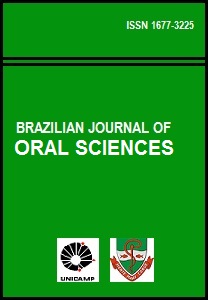Abstract
Three health Brazilian families were examined for their oral carriage of Staphylococcus aureus the most common persistent human pathogen. The mean level of S.aureus colonization was high 56.2% and 25.9% of the individuals were methicillin-resistant S. aureus (MRSA) carriers. However, a low level of resistance to eight antimicrobial agents were found, except for penicillin (85.1%), erythromycin (40.7%) and amoxicillin (22.2%).References
Microbiol 1995; 33: 2400-4.
Oliveira GA, Levy CE, Mamizuka EM. Estudo do perfil de resistência de 626 cepas de Staphylococcus aureus isoladas de 25 hospitais brasileiros entre setembro de 1995 e junho de 1997.
J Bras Patol 2000; 36: 147-56.
Suggs AH, Maranan MC, Boyle-Vavra S, Daum RS. Methicillinresistant and bordeline methicillin-resistant asymptomatic Staphylococcus aureus colonization without identifiable risk factors. Pediatr Infect Dis J 1999; 18: 410-4.
Hiramatsu K, Hanaki H, Ino T, Yabuta K, Oguri T, Tenover FC. Methicillin-resistant Staphylococcus aureus clinical strain with reduced vancomycin susceptibility. J Antimicrob Chemother 1997; 40: 135-6.
The Brazilian Journal of Oral Sciences uses the Creative Commons license (CC), thus preserving the integrity of the articles in an open access environment.

